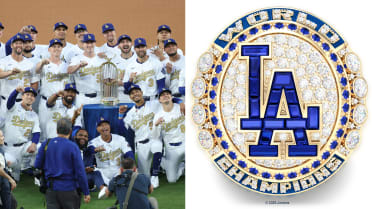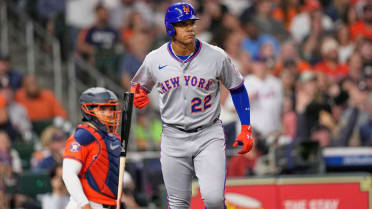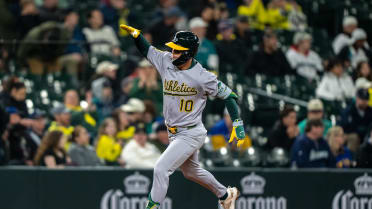Ask long-time scouts about the best hitter they've seen entering the pro game and they might pick Ken Griffey Jr. or Alex Rodriguez domestically, maybe Jose Cabrera internationally. On the mound, they might point to the stir Stephen Strasburg created in his Draft year.
But what if those talents could somehow come in the form of one single player, one who could impact the big league roster immediately on both sides of the ball? That's what teams bidding on Japanese phenom Shohei Ohtani are trying to figure out now that he has been officially posted and is reportedly in Los Angeles, ready to meet with teams.
With a new agreement, teams will still have to pay a $20 million posting fee to the Nippon-Ham Fighters, Ohtani's team in Japan, which was the maximum under the previous posting system. There is a 21-day signing window and all indications are that Ohtani is eager to get through this process quickly. Any team that makes an acceptable bid is allowed to negotiate with Ohtani while that window is open. Whichever team is able to convince Ohtani to sign will have to write a $20 million check to Nippon in order to get the multi-tooled phenom.
:: Shohei Ohtani coverage ::
"I saw Griffey in the Minor Leagues and A-Rod as an amateur," one international scouting director said. "The buzz about Ohtani is similar to those guys and guys like Strasburg. Compared to Griffey and A-Rod, he isn't as polished a hitter and probably doesn't have the same upside. But he does have the chance to be a Strasburg. What is unique is that he does both."
While scouting directors contacted for this story all did seem to lean toward liking Ohtani more as a pitcher, they generally agreed on two things: 1. Ohtani is good enough to hit at the highest level. 2. He really wants to do both, if possible, once he gets here.
The Ohtani scouting report
On the mound, Ohtani has as good a fastball as anyone in baseball. He's been up to 102 mph and touches triple digits with some regularity. Ohtani throws a nasty splitter and a slider that's just as good, and it all comes from a loose, athletic, 6-foot-5 frame and delivery.
"He's every bit of a top-end-of-the-rotation starter," said another international scouting director who saw Ohtani pitch recently. "He threw well the other day, even if his command was a little off. The stuff is there. He has all the pitches he needs. He's 23 and everything works. He's shown he can put it together in the Japan League. For me, he would go straight to the big leagues and figure it out there."
That report alone -- three plus pitches, with a tall and athletic frame to go along with easily repeatable mechanics -- would be more than enough to have teams line up to try and sign Ohtani. But even those who feel the arm is ahead of the bat agree there are some impressive offensive tools to consider.
"He's a big, strong guy," the second scouting director said. "At 6-foot-5, he's a long-lever guy. He has shortened up his swing a little and has the chance to hit for some power. When you have a top-end-of-rotation guy, he's more of a pitcher for me. But he has the chance to be a good hitter. He's a very, very good athlete."
"Ohtani is already hitting really well at [Japan's] highest level," a third director said. "But you don't see the pitching there that you see here."
The first scouting director said he'd put Ohtani's raw power among the best of any player at any level currently and also had recorded home-to-first times at 3.9 seconds, which is well above average and a part of his game not often discussed. All agreed that if Ohtani wanted to just hit, teams would be very interested in his services.
What a two-way big leaguer might look like
Both Hunter Greene and Brendan McKay were given the opportunity to continue as two-way players at the start of their pro careers, at least briefly. Greene got some at-bats as a designated hitter while preparing to make his debut on the mound, and he will now focus on pitching. McKay, however, will get the chance to continue to develop both sides of his game during his first full season of pro ball in 2018.
That, of course, will happen in the Minor Leagues. Ohtani will presumably be doing it at the highest level from day one. But he has the tools to do it, which is why even the most grizzled scouting vet gets almost euphoric when considering his future.
"I've been doing this 26 years, seen as many players as anybody, but I've never seen a skill set like this," the first director said, noting that the only real negative has been some nagging injuries that have made it a bit more difficult to see him. "This guy is polished like McKay with Greene's tools, but he's faster than Greene. There should be giddiness; no one has ever seen it. We'll see how it turns out."
Perhaps at some point, Ohtani will need, or choose, to focus on one thing. But it's been made clear he would like the opportunity to hit and pitch against the best the world has to offer.
"What you admire about him, though I've never met him, is that he wants that challenge," the third director said. "Ichiro wanted to come here and face the best pitchers in the world. This guy seems to want to do that. He wants to do something that's never been done. He's doing it there and he's dominating, so obviously the guy isn't afraid."
"He's telling everyone he wants to hit, too. You'll have to let him or you're not going to get him," the second director said. "A plan will have to be devised to save his arm and use him as both a hitter and a pitcher."
Most have felt an American League team would best be suited to make such a plan, with the use of the DH spot a strong option to get Ohtani at-bats without wearing him out in the outfield. The first director, who is from a National League club, said that a team from his league shouldn't be ruled out, however.
"The two-way player thing is super fascinating," he said. "The obvious response is he'll go to the AL and DH. Could you could argue he could go to the NL and get as many plate appearances? There are teams who are equipped, who could keep him on the same routine, a seven-day routine, and and let him play outfield a couple days a week, pinch hit in between.
"I think if an NL team wants to be creative, he could get 300-350 plate appearances. I wouldn't eliminate an NL team."
Changing the game
Ohtani, as well as McKay, is altering both the scouting and player development landscape. No longer can one side of a player's game be dismissed or ignored quickly. And if one player can succeed, it's sure to open the door for others who dream of hitting and pitching at the next level.
"As long as the talent is there, both tools are really good, you have to give them the opportunity to do both," the second director said. "In 35 years, I've never had this happen."
"He definitely can, but I don't know how many talents are like this," the first director said. "It could change the game. Kids are becoming more athletic than ever. What if Madison Bumgarner came out after Ohtani? That guy's a pretty good hitter and would get the chance to hit. He could be game-changing for sure."
"Because this is so rare, we're not good at developing them," the third director added. "We don't get these guys. "How do you develop both skills at the same time, that's the real challenge.
"I think we're going to see more and more of them. Enrollment is way down in youth football with all the head injuries. I think you're going to see more athletes zero in on baseball at a younger age. In the coming drafts domestically, you're going to see more guys like this. We're going to have to get better at developing these talents."
Jonathan Mayo is a reporter for MLBPipeline.com. Follow him on Twitter @JonathanMayo and Facebook, and listen to him on the weekly Pipeline Podcast.



